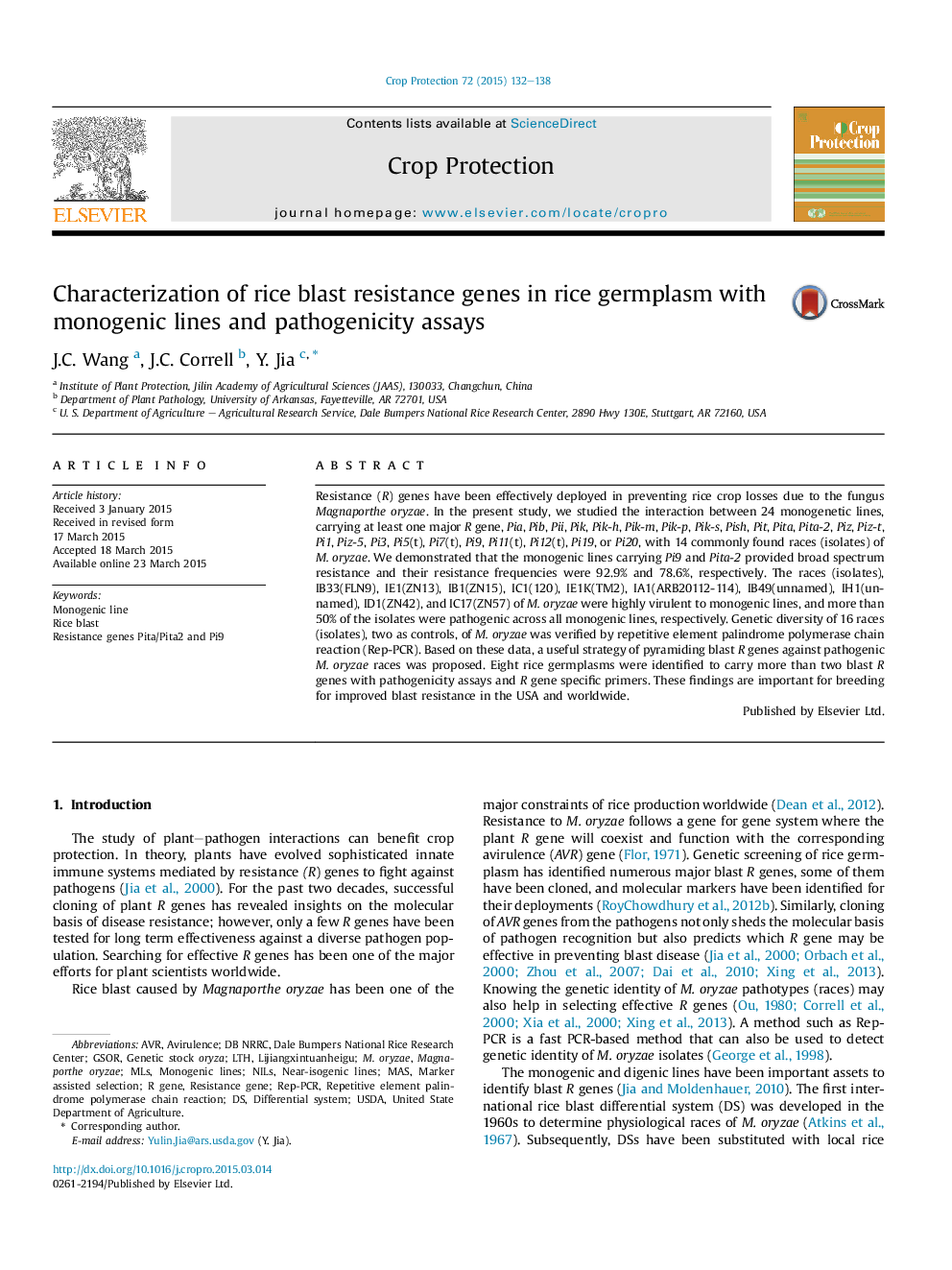| Article ID | Journal | Published Year | Pages | File Type |
|---|---|---|---|---|
| 6373449 | Crop Protection | 2015 | 7 Pages |
â¢We provided information on blast resistance gene deployment.â¢Pi9 and Pita2 are effective blast resistance genes in the USA.â¢Ten out of 14 commonly found races of Magnaporthe oryzae were highly virulent.â¢Eight rice germplasm have more than two blast resistance genes.
Resistance (R) genes have been effectively deployed in preventing rice crop losses due to the fungus Magnaporthe oryzae. In the present study, we studied the interaction between 24 monogenetic lines, carrying at least one major R gene, Pia, Pib, Pii, Pik, Pik-h, Pik-m, Pik-p, Pik-s, Pish, Pit, Pita, Pita-2, Piz, Piz-t, Pi1, Piz-5, Pi3, Pi5(t), Pi7(t), Pi9, Pi11(t), Pi12(t), Pi19, or Pi20, with 14 commonly found races (isolates) of M. oryzae. We demonstrated that the monogenic lines carrying Pi9 and Pita-2 provided broad spectrum resistance and their resistance frequencies were 92.9% and 78.6%, respectively. The races (isolates), IB33(FLN9), IE1(ZN13), IB1(ZN15), IC1(120), IE1K(TM2), IA1(ARB20112-114), IB49(unnamed), IH1(unnamed), ID1(ZN42), and IC17(ZN57) of M. oryzae were highly virulent to monogenic lines, and more than 50% of the isolates were pathogenic across all monogenic lines, respectively. Genetic diversity of 16 races (isolates), two as controls, of M. oryzae was verified by repetitive element palindrome polymerase chain reaction (Rep-PCR). Based on these data, a useful strategy of pyramiding blast R genes against pathogenic M. oryzae races was proposed. Eight rice germplasms were identified to carry more than two blast R genes with pathogenicity assays and R gene specific primers. These findings are important for breeding for improved blast resistance in the USA and worldwide.
